New Subcompact City Crossover
Subcompact crossovers are hot, and are becoming the vehicle of choice over compact sedans. For about the same performance, a small crossover offers the utility of more interior space and a better outlook on the road. To make sure everyone’s driving needs are met, Hyundai has sliced the crossover pie one more time with the Venue, becoming the smallest crossover in its line-up, which now includes, in ascending size—Kona, Kona Electric, Tucson, Nexo Fuel Cell Electric, Santa Fe and Palisade. Dividing consumers into four categories, so to offer something perfect for any lifestyle, Hyundai has targeted its seven different crossover SUVs into Singles/Couples, Early Family, Full Nest Family and Early Eco Adopters.

So what is the 2020 Hyundai Venue? Take a Hyundai Accent subcompact sedan and blow it up to be more accommodating for people and gear. Available in front-wheel drive only with one engine choice, this small crossover offers versatility primarily for city driving, but is very capable on the freeway.
Driving Experience: On the Road
There are three trim levels for the Venue–SE, SEL, and Denim. The only engine offered is a 1.6-liter non-turbo putting out 121 horsepower and 113 pound-feet of torque. Clean Fleet Report spent a week in the front-wheel drive Venue, where a continuous variable transmission, or in Hyundai speak, an intelligent variable transmission, had three driver-selectable drive modes of Normal, Sport and Snow. Being in Southern California, we didn’t have much need to test the Snow setting, but we did play around with the other two.
The EPA ratings of 30 mpg city/34 highway/32 combined are good fuel economy numbers, and will be a draw for those looking for a vehicle that can economically handle almost all of their driving needs. Having reviewed many Hyundai cars and crossovers, we took the challenge to see if we could do better.
In 210 miles of 75-percent highway/25-percent city driving, we averaged 33.2 mpg. However, in a 130-mile all-highway run with the cruise control set at 65 mph and in the Normal drive mode, we achieved 41.2 mpg. Our results show that in typical driving around town and on the open road, the Venue sips gasoline, not gulps it. Fuel economy numbers reported by Clean Fleet Report are non-scientific and represent the reviewer’s driving experience. Your numbers may differ.
The two driver selectable drive modes that will be used the most are Normal and Sport, offering both economical and spirited driving options. Maximum torque doesn’t hit until a relatively high 4,500 rpm, meaning the Venue is not fast off the line. In Normal mode the feeling, when tromping on the gas pedal, is one of “Okay, here we go, c’mon baby, let’s go!” The reality is that the Venue is slow. However, turn the Drive Mode dial one click to the right and you find Sport. Dang if this doesn’t liven-up things, even to the point of saying, “Yeah, that’s more like it!” You can also place the transmission in manual and “shift” through an eight-gear simulation. Since there are no gears on a CVT, what you are doing is holding the CVT in a range to squeeze-out as much performance as possible. Again, this also livens-up things considerably. I spent most of my in-town driving in Sport and used it whenever entering a freeway. Remember, the Venue is designed for the city, where it does very well.

Regardless of the drive mode, acceleration and the CVT transmission are smooth and quiet. Out on the freeway, Normal was the place to be to get the best fuel economy. The only noise was when putting the most demand on the engine, but there never was a sense the Venue was straining.
The Venue’s handling was better than expected by just looking at it. Initial impression is that a short, high-roof vehicle would be a handful around corners. While the 2,738 pound Venue isn’t a sporty crossover in any sense of the term, it handled corners with manageable body roll when pushed too hard around corners. The overall ride was stiff, but composed. The Venue’s version of stiff meant that bumps and potholes were felt through the chassis. So for a city crossover, maybe a bit softer suspension would be nice.
The motor driven power steering was light in its feel, and the 17-inch alloy wheels were standard on our Denim trim level. MacPherson struts, coil springs and gas shocks make up the front suspension, while the rear has a torsion beam axle and twin tube shocks. The Venue was nimble enough, but you aren’t buying this crossover for its handling.
Driving Experience: Exterior
The 2020 Hyundai Venue has an upright stance, and in the two-tone paint scheme on our Denim model, it looks very much like a Fiat 500L or a Mini Cooper Countryman. There are eight colors with names like Galactic Gray, Green Apple, Intense Blue, and our Denim. Some are solid; others have a white or green roof. This isn’t the first time we have seen Denim as a trim package. In the mid-1970s, the now defunct AMC car company had a compact coupe that was called the “Levi’s Gremlin” with the interior looking like a brand new pair of denim jeans. Hyundai hasn’t gone quite that far with their Venue Denim, but it does have a nice, unique look and feel.

In the Denim trim, the front end gets LED projector head and daytime running lights, and LED taillights. The design is different enough from all other Hyundai crossovers, so it stands out, with Hyundai adding that Venue “references a place people want to be seen in.” Depending on the body color, you can get either a black or chrome cascading grille, which is the new signature face already found on the Kona and Nexo. The sides have aggressive body lines that give it a wider look than it actually has. A strong character line runs front to rear. The full wheel arches, with the 17-inch alloy wheels on the Denim, looked sharp and filled the wheel wells. The standard 15-inch steel wheels might not look as impressive. There was plastic body cladding, which is usually reserved for serious all-wheel drive crossovers and SUVs designed to head off-road. The Venue is neither of those.
Driving Experience: Interior
The Venue’s dash has logically laid-out controls, including a volume and channel knob for the radio, and larger wheels for the automatic temperature control. Simple and easy to understand, but curious that the radio knobs were different sizes. Hard plastic materials are more prevalent than soft, but not in a negative way, because to keep the cost down some sacrifices needed to be made. The minimal gloss black was a nice contrast against the brushed aluminum. The large, round speed and tach gauges, with black backgrounds and white numbers, are extremely easy to read.

Clean Fleet Report’s Venue Denim had cloth seating surfaces with leatherette edges to protect against wear. The heated fronts were generally supportive and had manual adjustments, while padding and thigh bolstering was ample. The center armrest is nicely positioned, height-wise, and slides so the driver’s hand can be on the steering wheel and the elbow on the armrest. There is a storage area, directly under the charge ports, and one between the dash and glove box. Wireless charging is not available, but it isn’t expected to be on an economy car.
I usually don’t mention the sun visors unless something needs to be called out. In this case, it is that the passenger visor does not extend while the driver side does. A little thing that can make a road trip just that much more enjoyable.
Hyundai says the Venue seats five passengers, as in three out back where headroom is good, but knee and leg room not so much. Three is doable, but better yet make it two adults, as three would be uncomfortable for more than a few blocks. But all rear passengers would suffer comfort as the seat backs are too upright for anything more than a short trip. So what is the rear seat’s best use? Easy, fold the 60/40 seat flat and storage is greatly increased, making this crossover a true utility vehicle.

Clean Fleet Report’s Venue Denim was fully optioned with an 8.0-inch color touchscreen–for the rearview camera that has parking guidelines, navigation and the infotainment system. Our tester had six speakers, including two tweeters, for the audio system, with HD FM/AM/SiriusXM, Apple CarPlay and Android Auto, all of which can be managed from the leather-wrapped steering wheel mounted controls. Other features of the system include USB ports, and Bluetooth for voice controls and hands-free telephone calling. All-in-all, it’s a very driver-friendly and easy to figure-out and operate system.
Our Venue came with Hyundai’s BlueLink Connected Services, keyless entry, proximity key push button start, power and heated side mirrors, a tilt and telescoping steering column and optional carpeted floor mats.
Safety
The 2020 Venue has safety features of six front and side airbags, four-wheel power disc ABS brakes with brake force distribution and brake assist, vehicle stability management and a tire pressure monitoring system. Some of the advanced driver assistance systems (ADAS) include forward collision avoidance with pedestrian detection, blind spot detection and rear cross-traffic collision warning, driver attention warning and lane keep assist.
The 2020 Venue earned a Four Star overall rating (with five stars being their top rating) by the National Highway Traffic Safety Administration (NHTSA).
Pricing and Warranties
The 2020 Hyundai Venue comes in four models ranging in base price of $17,350 to $22,050. Clean Fleet Report’s Venue Denim, with the carpeted floor mats option ($155) and the $1,120 freight and handling charge, had a MSRP of $23,325.
The 2020 Venue comes with these warranties:
Powertrain – Ten years/100,000 miles
New Vehicle – Five years/60,000 miles
Anti-perforation – Seven years/Unlimited miles
Roadside Assistance – Five years/Unlimited miles
Observations: 2020 Hyundai Venue Denim
The Venue is part of the extensive Hyundai crossover SUV line-up, joining the Kona, Kona EV, Tucson, Santa Fe, Palisade, and Nexo. Not many other companies offer such a wide array of sport utility vehicles. Competition wise, the Venue will go head-to-head with the Nissan Kicks, Honda HR-V and the Toyota CH-R. So, why the Venue?
From a design standpoint, the Venue looks pretty good, staying away from sharp-cut edges and looking like a more traditional SUV, with cues taken from the largest Hyundai SUV, the Palisade. There is nothing cheap-looking about Hyundai’s least expensive utility vehicle.

But useful utility is the key. So how does the 2020 Venue handle people and their stuff? For a subcompact crossover, it does fine, especially with the rear seat folded flat. Singles and couples will be drawn to the Venue, making it a contender in this popular segment.
If you are considering a vehicle of this size, the 2020 Hyundai Venue’s exterior and interior design, plus good fuel economy, safety equipment and outstanding warranty should place it on your “must see” list. Starting at a bit over $17,000, and fully loaded just over $23,000, including shipping, all of a sudden the 2020 Hyundai Venue becomes the new standard for the subcompact crossover class.
Make sure to opt-in to the Clean Fleet Report newsletter (top right of page) to be notified of all new stories and vehicle reviews.
Whatever you buy, Happy Driving!
Related Stories You Might Enjoy—The Many Subcompact Contenders
Road Test: 2020 Toyota CH-R
Road Test: 2016 Honda HR-V
Road Test: 2018 Mazda CX-3
Road Test: 2019 Hyundai Kona Ultimate
Road Test: 2020 Hyundai Kona Electric
Road Test: 2019 Kia Niro Electric
Road Test: 2020 Kia Soul X-Line
News: 2020 Kia Soul EV Debuts
Road Test: 2020 Mazda CX-30
News: 2018 Nissan Kicks
Road Test: 2019 Subaru Crosstrek PHEV
Road Test: 2018 Nissan Rogue Sport
Road Test: 2017 Jeep Renegade
Road Trip: 2018 Ford EcoSport
Road Test: 2015 Chevrolet Trax
Road Test: 2020 Fiat 500X
Road Test: 2018 Kia Sportage
Disclosure:
Clean Fleet Report is loaned free test vehicles from automakers to evaluate, typically for a week at a time. Our road tests are based on this one-week drive of a new vehicle. Because of this we don’t address issues such as long-term reliability or total cost of ownership. In addition we are often invited to manufacturer events highlighting new vehicles or technology. As part of these events we may be offered free transportation, lodging or meals. We do our best to present our unvarnished evaluations of vehicles and news irrespective of these inducements.
Our focus is on vehicles that offer the best fuel economy in their class. We also feature those that are among the top mpg vehicles in their class. In addition, we aim to offer reviews and news on advanced technology and the alternative fuel vehicle market. We welcome any feedback from vehicle owners and are dedicated to providing a forum for alternative viewpoints. Please let us know your views at publisher@cleanfleetreport.com.

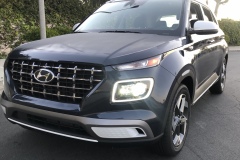
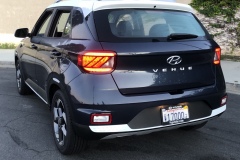
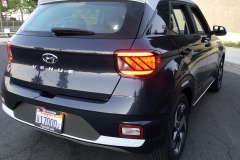

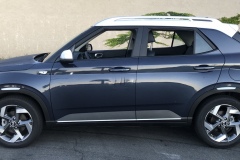
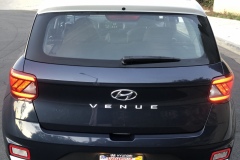
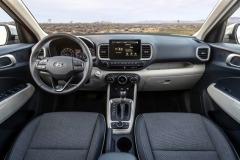
5 thoughts on “Road Test: 2020 Hyundai Venue”